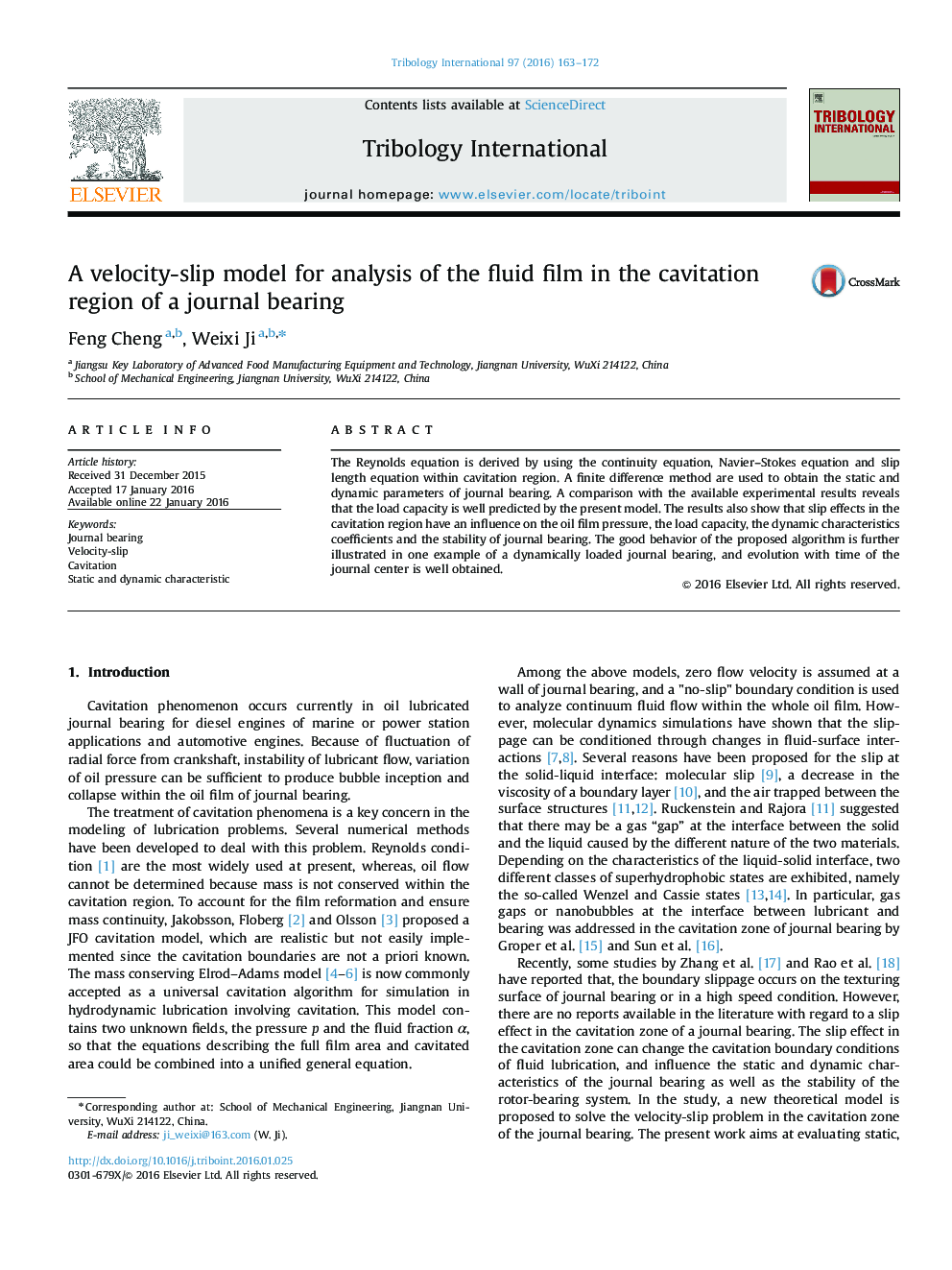| Article ID | Journal | Published Year | Pages | File Type |
|---|---|---|---|---|
| 614314 | Tribology International | 2016 | 10 Pages |
•A velocity-slip model is developed for analysis of cavitation in a journal bearing.•High slip coefficient (Ks=1) forms in cavitation region of journal bearing.•Slip effect increases load capacity and decrease crical mass at lower rotating speed.•Slip effect has no effect on performace of journal bearing with increase of rotating speed.•Velocity-slip model well predicts load capacity by available experiment results.
The Reynolds equation is derived by using the continuity equation, Navier–Stokes equation and slip length equation within cavitation region. A finite difference method are used to obtain the static and dynamic parameters of journal bearing. A comparison with the available experimental results reveals that the load capacity is well predicted by the present model. The results also show that slip effects in the cavitation region have an influence on the oil film pressure, the load capacity, the dynamic characteristics coefficients and the stability of journal bearing. The good behavior of the proposed algorithm is further illustrated in one example of a dynamically loaded journal bearing, and evolution with time of the journal center is well obtained.
